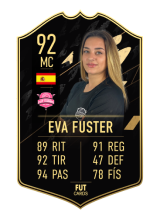In Aviamasters, speed modes act as dynamic gameplay intensities that directly shape reaction time and control precision—adjustable intensities allowing players to calibrate their focus and motor response. These modes are not merely about acceleration; they form a structured system where UI customization—such as button size, positioning, and opacity—enables personalized control, tailoring the challenge to individual reaction profiles. Autoplay functionality, with its configurable stop conditions, further enriches learning by prompting deliberate pauses and situational awareness, transforming reflex-heavy play into mindful engagement.
The ×1.0 Starting Multiplier: A Foundation of Fairness and Control
The ×1.0 starting multiplier establishes the baseline for all speed mode multipliers, ensuring consistency across gameplay. This neutral reference point prevents runaway acceleration or diminished responsiveness, fostering a fair competitive environment. Multipliers above ×1.0 increase movement velocity and decision urgency, demanding sharper reflexes, while values below ×1.0 encourage deliberate, precise control—ideal for refining accuracy and pacing. From a safety perspective, a stable starting point minimizes accidental overperformance, reducing cognitive overload and promoting controlled progression through dynamic challenges.
| Multiplier Level | Effect on Gameplay | Safety Benefit |
|---|---|---|
| ×1.0 | Neutral baseline speed and response | Prevents unintended acceleration spikes |
| >1.2 | Increased movement and urgency | Heightens focus but requires sharper control |
| <-0.8 | Reduced speed and slower decisions | Encourages methodical play and error correction |
Speed Modes as Pedagogical Tools: Structured Challenge for Skill Growth
Speed modes in Aviamasters function as structured difficulty levels explicitly designed to accelerate player skill development. They bridge mechanical engagement with cognitive growth, offering adaptive experiences where challenges evolve with performance. A key example is adaptive speed modes that respond to player accuracy: when precision drops, the system automatically reduces speed, reinforcing attentional focus and error awareness. This real-time feedback loop strengthens neural pathways tied to timing and spatial judgment.
- Adaptive modes align difficulty with player performance, preventing frustration or complacency.
- UI customization enhances this pedagogy by matching interface responsiveness to individual reaction profiles, enabling personalized pacing.
- These dynamic adjustments model how modern training systems balance challenge and safety through responsive design.
Autoplay Customization: Integrating Stop Conditions for Mindful Mastery
Customizable autoplay stop triggers—such as collision detection or target acquisition—transform automatic play into a deliberate practice tool. By requiring players to manually confirm pauses, Aviamasters reinforces situational awareness and timing discipline. This integration with speed mode settings cultivates strategic pauses, preventing reflex overload and promoting intentional engagement with the game’s rhythm.
For instance, disabling autoplay during critical maneuvers forces players to rely on conscious control rather than instinctive reactions. This practice mirrors real-world safety protocols where automatic systems demand active oversight—teaching players to assess risk before action, a core skill in both gameplay and life.
Simulating Real-World Speed and Safety Tradeoffs
Consider a high-speed mode where reduced visibility forces deliberate slowing, illustrating the cognitive load inherent in fast environments. In such scenarios, players confront the tension between velocity and control, learning that haste often increases error rates. Another illustrative example: disabling autoplay during tight turns or complex sequences reinforces mindful decision-making over reflexive responses. These design choices embed safety into the core gameplay loop, modeling how adaptive systems balance performance with prudence.
Aviamasters does not merely reward speed—it rewards control. By linking speed mode adjustments with intentional pauses, the game demonstrates how structured, responsive rules teach real-world skills such as situational awareness, delayed reaction, and risk mitigation.
Conclusion: Speed Modes and Safety as Mastery Tools
Speed modes in Aviamasters are far more than performance settings—they are pedagogical instruments fostering situational control, self-regulation, and deliberate practice. The ×1.0 baseline ensures fairness, while adaptive multipliers and UI customization support differentiated learning aligned with individual reaction profiles. Autoplay with configurable stop conditions integrate safety and feedback, transforming automatic responses into mindful actions.
As seen in the aviators’ crash genre, where precision and timing are paramount, Aviamasters exemplifies how game design embeds real-world skills through structured rules. By balancing challenge and caution, the game teaches players not just to react, but to respond—skills that resonate beyond the screen.
Key insight: Speed modes are not just about faster play—they cultivate disciplined control and adaptive awareness, turning reflex into responsibility.
Explore the aviators’ crash genre for deeper insight into speed, safety, and skill.

